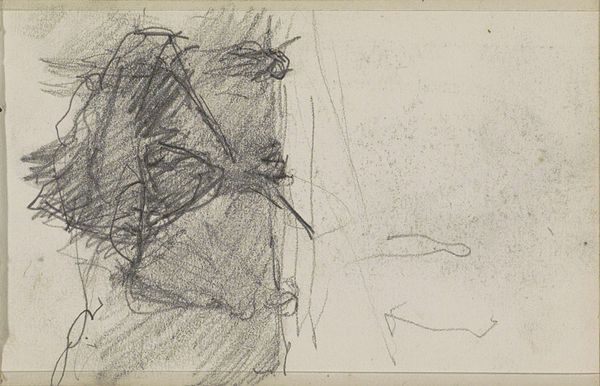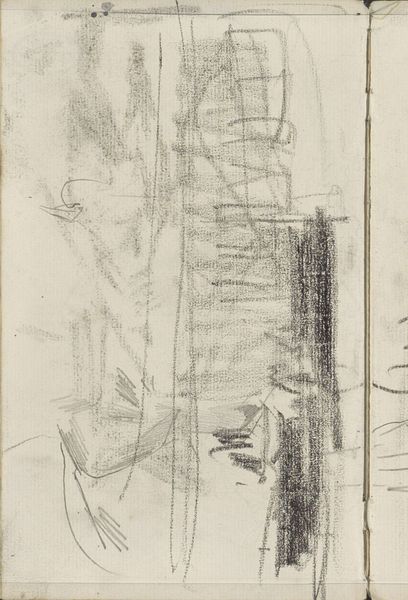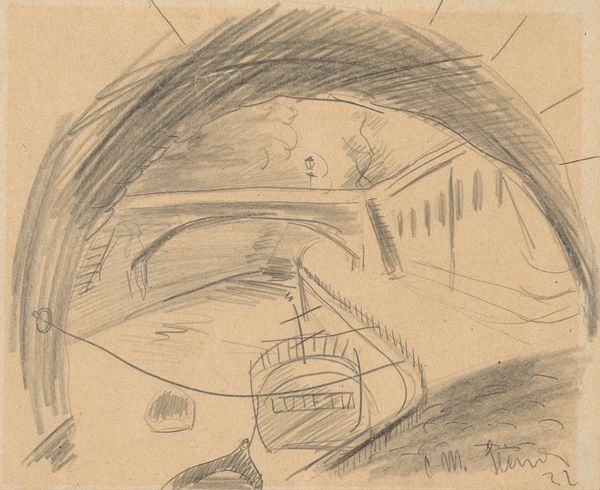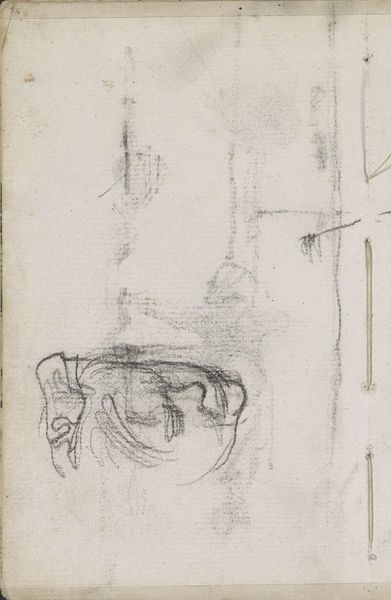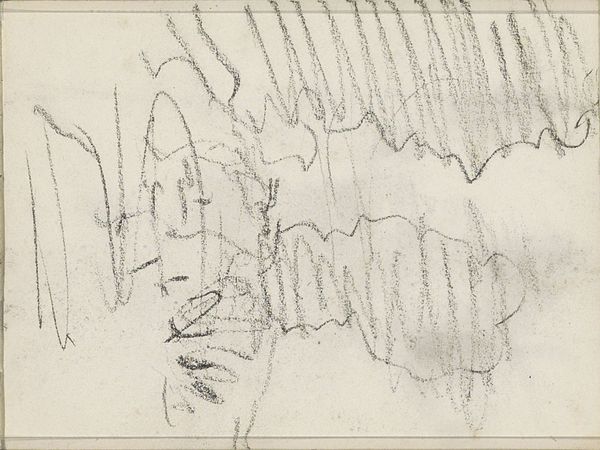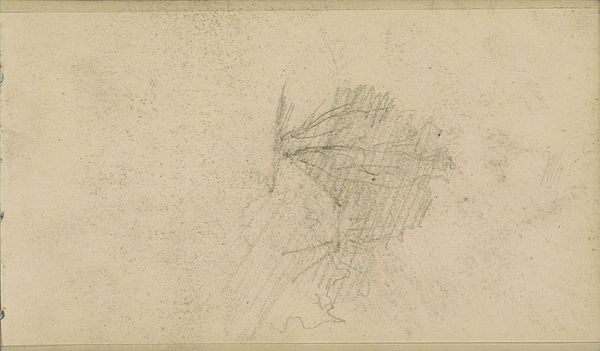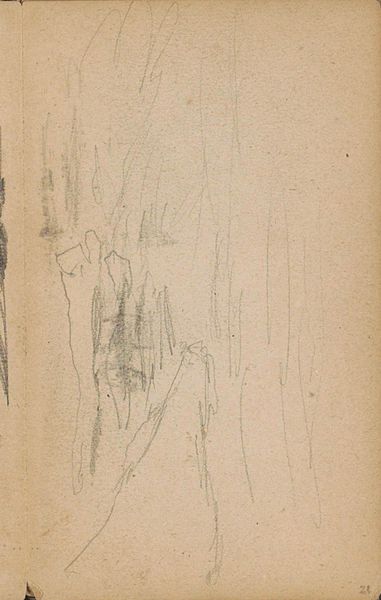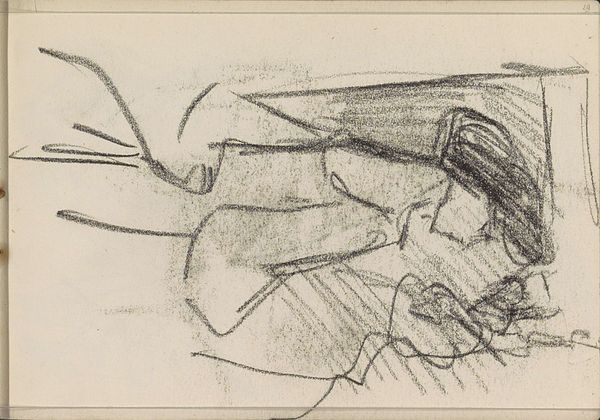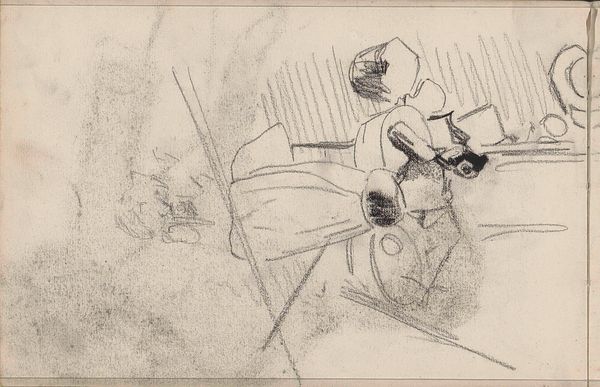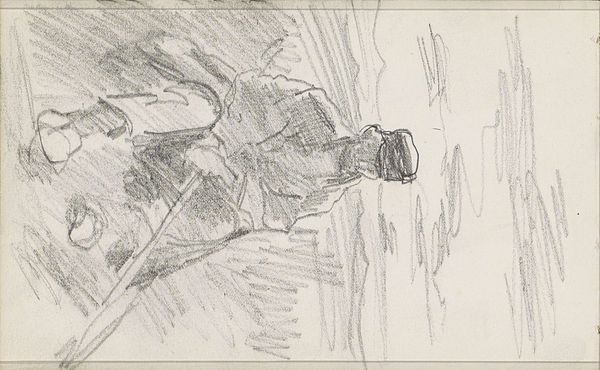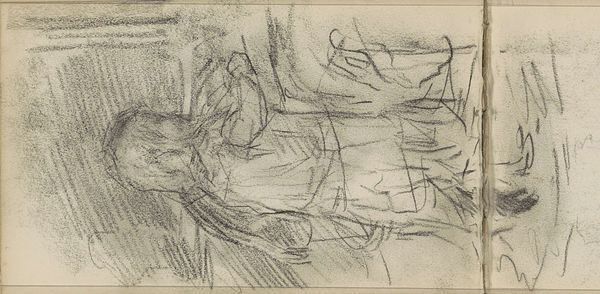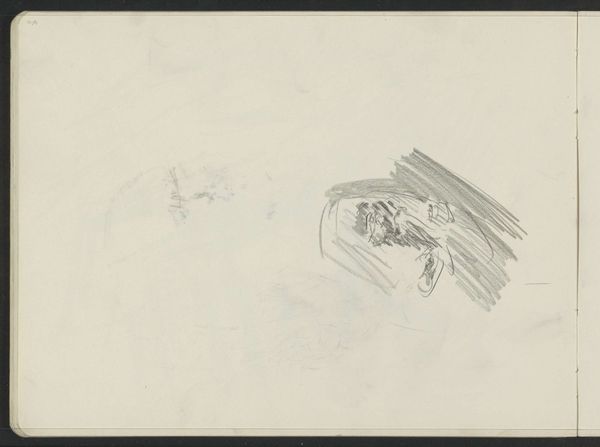
drawing, paper, pencil
#
portrait
#
drawing
#
pencil sketch
#
figuration
#
paper
#
pencil
#
realism
Copyright: Rijks Museum: Open Domain
Curator: This pencil drawing, tentatively dated between 1901 and 1927, is titled "Studie van een meisje" by Johan Antonie de Jonge. It presents us with an intimate, yet unfinished glimpse of its subject. Editor: It feels so tentative, almost shy. The heavy shading around the figure contrasts sharply with the emptiness on the right. She appears to be swallowed by the shadows, a feeling of constraint seems present. Curator: De Jonge was quite known for his realistic portraits. The piece’s apparent lack of polish begs the question if the sketch was preparatory study or finished work. I feel like we are seeing art students put to paper, honing their craft with human model studies. Editor: It makes me think about the role of women as subjects for male artists and whether their perspective was properly reflected and understood. But yes, the rapid lines, the artist exploring contour and tone remind us how often female figures have been sketched. I would say, there's a whole cannon dedicated to the idea. Curator: I understand your reservations. In terms of cultural context, these studio practices shaped our perception of realism in portraiture, emphasizing skill, precision and adherence to detail that determined an artist status. I do appreciate how realism becomes almost abstract. I almost see traces of social dynamics play out where this figure gets portrayed in some unfinished manner. Editor: True. There’s also the history of the drawing medium itself. Its accessibility allowed for a democratisation of portraiture but even within it hierarchies played out that favoured polished over raw imagery, male over female artistry. Curator: These observations make it an entrypoint for broader discussions of representation, labor and perception that's applicable to artistic practice even to this day! Editor: Exactly. Let us leave with our viewers an invitation, or an urging perhaps, that they use it as opportunity to find other means of visual vocabulary other than traditionally seen throughout institutional settings.
Comments
No comments
Be the first to comment and join the conversation on the ultimate creative platform.
